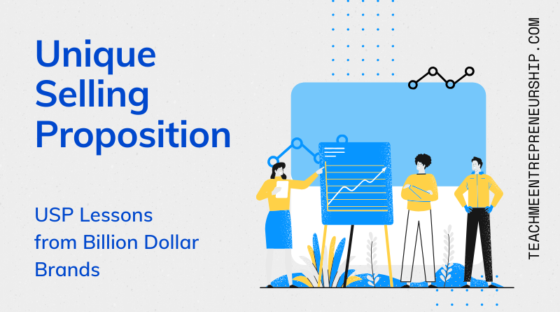The explosion of online retailing made it a lot easier and cheaper to start a business than ever before.
Therefore, increasing competitiveness in almost every industry across the globe prompted companies to find out the best practices for capturing and retaining consumer attention.
In this ferociously competitive environment, standing out in a crowd of competitors is no easy task.
In research conducted by CB Insight, analysts performed post mortems on well over 100 businesses to understand the primary reason for startup failure, observed that competition is among the top five reasons for small business failures.

There are a number of sources including Forbes, Fractl, and Bloomberg reported that the lack of a unique selling proposition is one of the primary reasons for business failures.
“In a world full of competition, the challenge is to set yourself apart from being another ‘me too’ business.
The best way to escape the rat race is to simply develop a unique selling proposition that differentiates you from your competitors.
The article provides a detailed action plan anyone can follow to create a USP (unique selling proposition) that can attract your competitor’s customers to switch over to your brand.
USP (Unique Selling Proposition) Lessons from Successful Brands
1. “Shave Time. Shave Money”
Back in 2010, consumers were being robbed. Razors for men and women are both expensive, but women’s razors seem to be more expensive.
The razor industry was dominated by Gillette, owned by the American multinational corporation Procter & Gamble (P&G).

Monopoly and highly concentrated corporations like Gillette forced consumers to pay more than $20 for just a few blades.
Buying razors was a pretty daunting task.
Picture Yourself, going to the drugstore waiting for a store representative to open up the razor fortress? It was always locked.
Long-standing irritation and paying more than seems reasonable for a small pack of blades. As much as $25.
The industry leaders used to operate under the razor and blades business model.
The razor business model sells the base item at a low price in order to gain profit from ongoing sales of consumable products sold at a high markup.
In a razor industry for example: “Give ’em the razor; sell ’em the blades” continued to be popular until 2010.
In December 2010, Dubin was happy to be invited to the Christmas party by a friend. Where he met a friend’s father-in-law, Mark Levine, but Levine had a dilemma.
I need to unload a warehouse full of surplus razor blades, Levine said.
The conversation went on to irritation over the cost of razors and the inconvenience of accessing these in a shop.
It was a light bulb moment when Dubin, the man who suffered the frustrating experience of buying new razors, came with an idea.
He felt if he could sell the blades to customers for a lower price, a lot of the irritations would be solved.
Excited about the idea, Dubin thought, what if I could start a subscription service that would eliminate the expense and hassle of buying razor blades?
What if they delivered your door each month for $1 each?
Thus, the Dollar Shave Club was born.
To test the idea, Dubin started his company in January 2011 from his apartment with their own money and began operations.
Although, a couple of months later he got investments from start-up incubator Science Inc., and launched their website in April 2011.
So Dubin continued to spend his company’s early dollars from the beta phase until March 6, 2012, when Dubin created a hilarious video to connect with his target audience.
“The site crashed because of the traffic, and the video had gone viral, and we ran out of inventory in the first six hours. And I mean, you know, I blocked a lot of that out because it was a very trying, difficult time to get through.”
The viral video attracted 12,000 orders in the first 48 hours and also convinced former Myspace CEO Michael Jones to sign on as Dubin’s partner.
Dollar Shave Club managed to reach a valuation of a billion dollars within 6 years.
On July 19, 2016, Dollar Shave Club was acquired by Unilever for a reported $1 billion in cash.
Lessons
1. Understanding Customer Pain Points
- Product was too Expensive
- Frustrating buying experience
- The customer had to visit the store to often to buy new razors
2. Value-based Pricing
Dollars Shave Club provided affordable Razer blades.
3. Eliminating Hassles
The company eliminated the Long-standing irritation of waiting for a store representative.
And provided subscription service that will eliminate the expense and hassle of buying razor blades more often.
2. “Canadian Craftsmanship”
During the period from 1945–1989, soon after the end of the Second World War, Jews began to exit Poland.
During this time, a fabric cutter, a Polish Jewish immigrant known as Samuel Tick (originally Szmuel Tyk), one of the 50000 immigrants who left Poland.
Came to Canada in 1957, bringing a strong entrepreneurial spirit.
He founded a company, under the name Metro Sportswear Ltd.
The company initially started off making woolen vests, raincoats and snowmobile suits and other functional outerwear until the 1970s, when he created down-filled jackets.
These clothing are created for consumers who live and work in the coldest climates in the world.
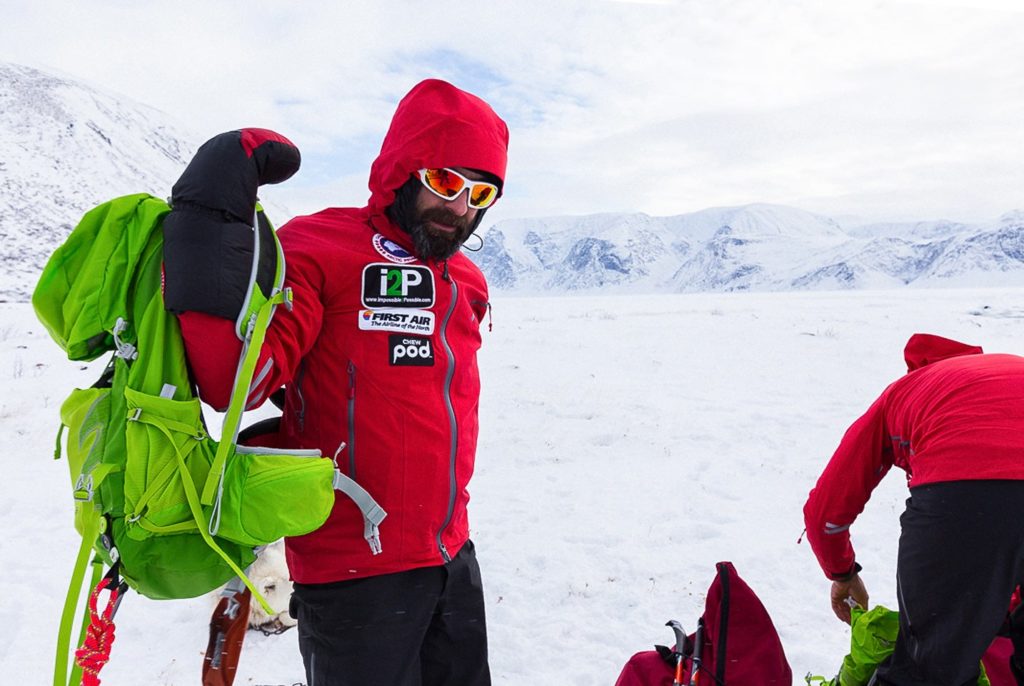
2 Years Later (1972), When the new CEO, David Reiss (Tick’s son-in-law), joined the company and relaunched the brand with a “Snow Goose” label with a new invention of the volume-based down filling the machine.
With the help of this machine the company refocused on these custom down-filled coats and heavy-duty parkas and developed specifically for the Canadian Rangers, city police departments the Ontario Provincial Police, municipal workers.
The new products were also appreciated by the Ministry of Environment, and the Ministry of Correctional Services.
In the early 1980s, the company becomes popular when they created a red down-filled coat known as Expedition Parka specifically developed to meet the unique needs of scientists at Antarctica’s McMurdo Station.
Eventually, it gains the nickname “Big Red” and the company has grown to 50 employees.
In 1985 the company began the production under its own “Snow Goose” brand.
Later in the early 1990s, Metro sold its European products under the name Canada Goose because of the Snow Goose name was already in use.
“I wanted to write short stories, I wanted to write fiction,” Dani (Son of David) says.
Later in 1997 after graduation, Dani was planning to travel the world and write short stories, but lack of funds forced him to join the family business to make some money for traveling.
Working in sales and cold calling gave him an opportunity to drum up the business.
He had no intention of running the business “It was the last thing I ever wanted to do,” says Dani, who dreamed about becoming a writer.
However, his passion for the business was ignited after attending a tradeshow in Germany it was a light bulb moment.
December 31, 2000, Dani turned 27 when he got an idea of going upmarket – selling to urban dwellers who were already paying extra for brands like Patagonia (for Patagonia coats).
So Dani decided a plan to price the coats around $1,000.
He wanted to move forward with this idea, therefore he asked his father to step down as CEO and said, ‘Look, I’m prepared to do this, but you’re going to have to let me do things. This is the vision I have. It’s different from the one you had’.
At the age of 27, Dani became president and CEO of Canada Goose. Under his leadership, the company becomes popular as a “Made in Canada” champion.
He turns a small outerwear manufacturer company into a global luxury brand.
Dani played a significant role in transitioning the business into a consumer-facing brand, developing international markets and building a world-class team of senior business leaders.
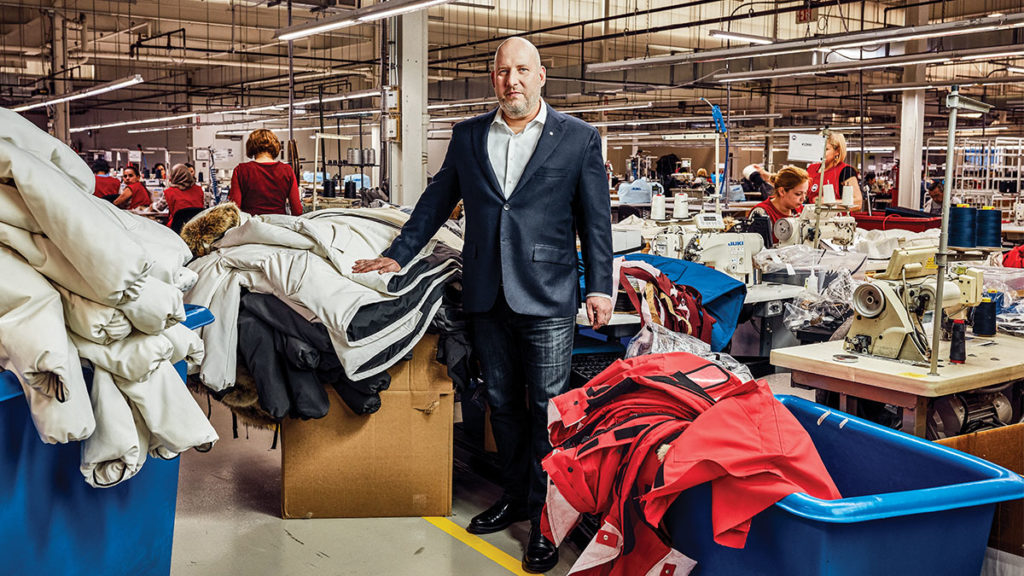
“Made in China” was the first decision of a CEO. The decision was taken at the time when the rest of the garment companies have relocated manufacturing to Asia to take advantage of lower wages.
But Dani refused to outsource and instead set up sewing schools in Winnipeg, Montreal, and Toronto.
Because Dani wanted to maintain the product quality and local jobs and wanted to represent the country on a global stage.
The company’s popularity increased further in Europe due to its decision to keep manufacturing in Canada.
Lesson
1. Targeting a hyper-focused Niche
The brand was hyperfocused on a niche market at the beginning instead of mass appeal.
Canad Goose coats are created specifically for consumers who live and work in the coldest climates in the world.
2. Luxury that does more than just look good
Canada goose jackets are a perfect combination of luxury with the highest quality.
Canada Goose coats are not only known for their high quality but also for being some of the warmest on the market.
3. “Made in Canada”
The tagline by itself. It’s telling
The decision to keep manufacturing in Canada became a USP of the brand.
3. “ We help people eat better, live better ”
A remarkable growth in the past three decades has noticed in china. This has resulted in a sustained increase in consumer income and led to huge changes in food consumption patterns.
Including rapid growth for diverse range food, higher quality, food consumption away-from-home.
These transformational changes in china’s food consumption have created brands like Pizznet, Takeaway.com, Just Eat, Grubhub.
These developments in food consumption have given birth to a whole new industry of online food ordering.
In 2008, Ele.me became the first brand in China that offers an online food delivery service.
Later on, Meituan Dianping surpassed Ele.me and become the largest player in china.
Meituan Dianping is a group buying website for locally found food delivery services, consumer products, and retail services.
Later in 2015, the company launched an app known as “transactional super app” where virtually any consumer transaction can now take place from food delivery to group discounts, movie tickets to restaurant reviews, for nearly 300 million Chinese.
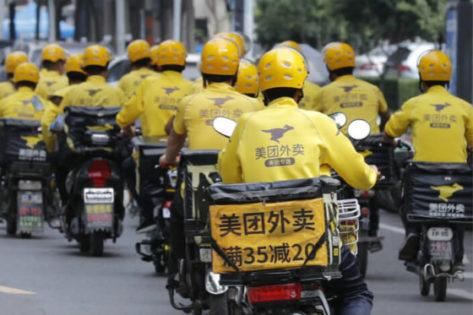
The company secured the position of a third-largest listed internet company in china following Alibaba ($428.3 billion) and Tencent ($394.3 billion).
Back in 2010, Meituan Dianping were two independent companies competing in the same industry.
Xing Wang the founder of Meituan launched the website in 2010, while Dianping was founded way back in 2003 by Tao Zhang.
Both websites focused on location-based features to suggest nearby restaurants and services.
The primary focus of Meituan was on food delivery, while Dianping focused on restaurant reviews.
For years, Meituan was popular in second and third-tier cities while Dianping was most well known in first-tier cities.
In the mid-2000s, there were 2000 voucher selling companies because of the intense competition in the industry only a few have emerged as dominant players and Meituan became one of them.
Meituan was a group-discount website, which sells the vouchers for deals.
The company offered a Quantity discount to the buyers from which Meituan generates commissions.
The company generated most of its revenue from mobile application services.
According to the company’s history, it has partnering agreements with over 400,000 Chinese local businesses.
Meituan Dianping the Beijing-based company, was created of two archrivals, Meituan and Dazhong Dianping.
On 8 October 2015, these rivals Meituan and Dianping become one company through a merger and became another Chinese super-app with features from apps like Deliveroo, Groupon and Tripadvisor.
During a merger, Alibaba stepped out of the company and sold all its shares in Meituan. Then Alibaba acquired shares in Shanghai-based Ele.me.
Then the company offered a super app that covers a huge range of services from restaurant reviews to full coverage of travel life that include travel essentials and leisure products.
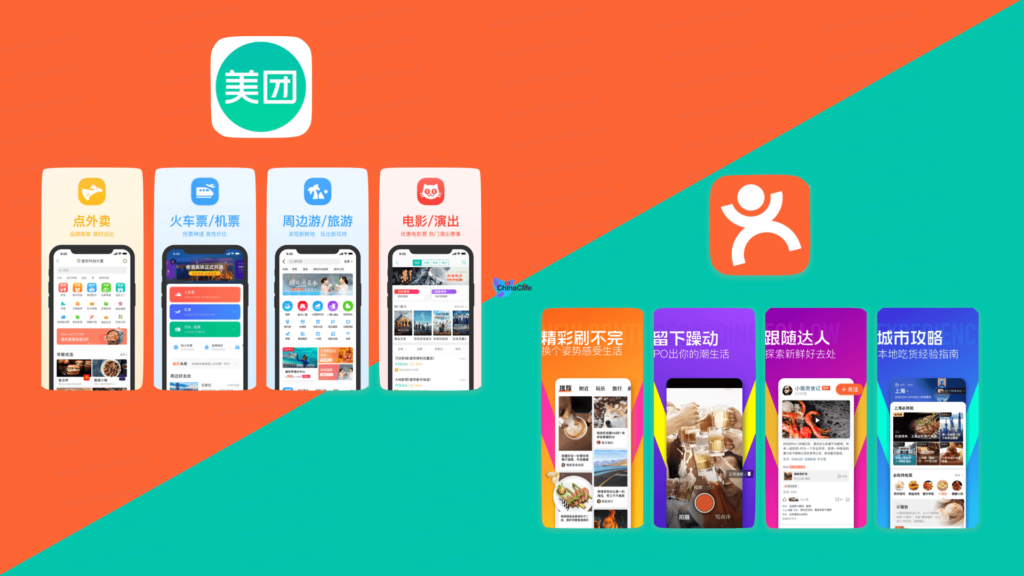
The company also offered 4 separate apps that offer different solutions, for example, Meituan Waimai for food delivery, Maoyan for cinema tickets, Dazhong Dianping for Reviews/Coupons, Meituan for Coupons/Group Buying.
I’ve just mentioned the core focus of these apps but they are used for more than what I’ve just mentioned.
These solutions made this company the largest food ordering and delivery platform in China and the world’s No. 1 player in food delivery.
Then the company continued to offer a range of solutions to merchants with online marketing, delivery, ERP and payment systems.
The company became successful because of its constant effort to find new ways to make its delivery platform more cost-effective.
As the number of transactions on our platform increased, order density also increased, and so the probability of grouping more orders together in one trip improved, which allowed us to further reduce our average delivery cost per order.
The company works with 4.7 million merchants partners, including hotels, restaurants movie theaters, hair salons, and others across more than 2,800 cities.
In the first half of 2018, the company served more than 350 million people through its platform and facilitated over $33.8 billion in transactions.
By expanding beyond food, Dianping Built China’s Largest E-commerce Platform for Services for which there is no direct comparison globally.
This is how the Meituan Dianping dominated in a cutthroat arena for on-demand services, outstripping Alibaba’s Ele.me and Ctrip in market share.
Lessons
1. Targeting a hyper-focused Niche
Initially, Wang Xing targeted 2nd — 3rd tier cities. Because of less competition, it resulted in lowering its customer acquisition costs.
The company targeted lower-tier cities of China for the lack of competition because of the lower acquisition costs, Wang Xing spent its funding on user experience and high-quality products.
2. Super App
Meituan Dianping is known for its “transactional super app”. The super app became the USP of the company.
This pioneering transactional super app can handle nearly all of your life’s transactions.
The app allowed consumers to complete their online purchases within just one app.
The convenience is what keeping the customers clinging onto the platform.
3. Cross-selling strategy
Its C-s strategy of using food services to sell its other lines of business was proven to be successful.
The food business allowed the company to accumulate a large user base.
The company developed one large platform of food so that it can cross-sell its other lines of services like hotel-booking
The company becomes the largest hotel-booking platform in China, by the first quarter of 2018.
4. Location-based database
Dianping Built China’s Largest E-commerce Platform, based on the strategy he calls “Food + Platform”, and developed Amazon of services.
Data became the biggest asset of the company and it helped the company to find out gaps in the market for new restaurants or stores.
The brand provides consumers access to a spectrum of location-based services, ranging from food delivery, hotel-booking, shop recommendations and, ride-hailing.
The company now has more than 530,000 daily active riders, who carry smartphones that transmit real-time location and data.
With the help of smartphones, the company collects the data and machine learning, to advance routing and dispatch of delivery riders.
4. “ To enable every merchant to deliver ”
Food delivery started to receive more attention, this era is associated with increased smartphone penetration.
In 2010, A multi-restaurant ordering website, Snapfinger witnessed 17 percent growth in their online food ordering in a single year.
Two years later (2012 ), Instacart was born. At that time, the industry was dominated by two major players, Seamless and Grubhub.
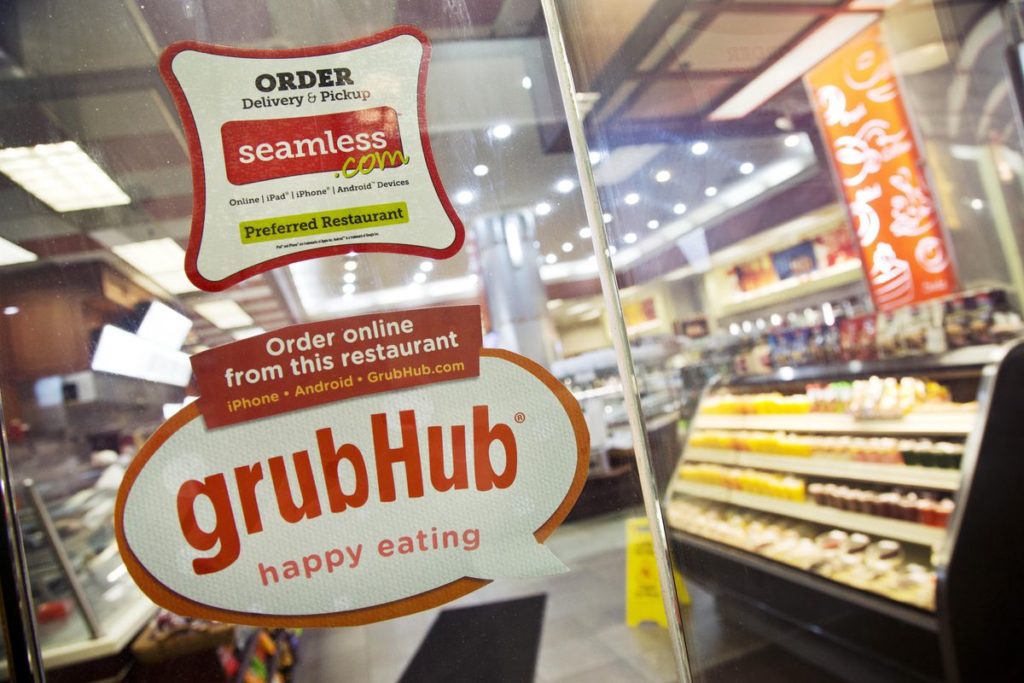
A year later in 2013 Seamless and Grubhub merged. It’s the time online food ordering began overtaking phone orders.
” To enable every merchant to deliver,” became a mission of a new brand born in the same year.
The story begins back in 2012 at a small macaroon store in downtown Palo Alto.
Andy Fang was working on building technology for small business owners with his friends Stanley Tang, Tony Xu and Evan Moore (all are students) at Stanford University.
Spending a long time with Chloe, the store manager. We were just about to leave, Chloe blasted out, “Well, there is one thing I wanted to show you.” She took out a thick booklet.
It was piled papers of delivery orders. Then she continued “This drives me crazy. I have no drivers to fulfill them and I’m the one doing all of it.”
It was an “Ah-Ha” moment for students.
From that moment the students began the research and interviewed over 200 small business owners all over the Bay Area — from San Mateo to Mountain View and witnessed that deliveries are painful.
All of them have experienced the same situation because they belong to big cities where food delivery was a common thing. But out in Palo Alto, none of the restaurants delivered.
The team decided that the problem was really important and worth solving.
January 12th, 2013, The team built the initial prototype in a few hours and Palo Alto Delivery was born.
Initially, the delivery service was managed by the students themselves.
They were students by day, delivery drivers by night. The company continued that every team member starts as a driver in their first week at our company.
In June, the company’s name changed to DoorDash.
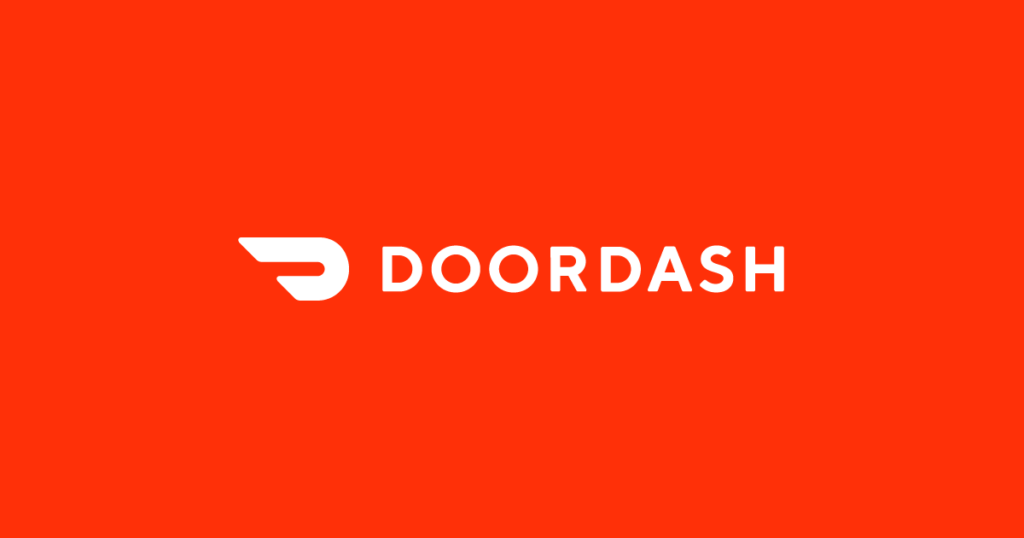
Since then, the team worked hard to provide the best delivery experience: from hiring drivers, working with restaurants, delighting customers to building out our complex, dispatch system.
DoorDash became one of the fastest-growing businesses in its sector.
The company became successful in achieving the vision, which is to “build the local, on-demand FedEx“.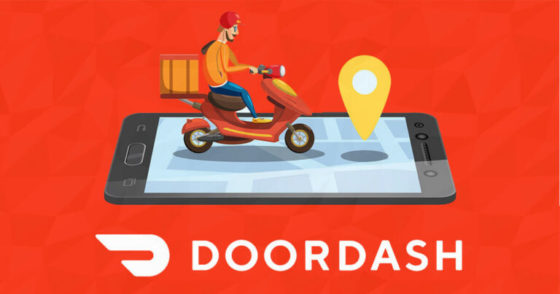
DoorDash recently surpassed Grubhub for the first time to take the largest share of U.S. food delivery. January 2020, DoorDash has captured 38% of the market.
“Ultimately, our vision is to build the local, on-demand FedEx. We are a logistics company more so than a food company. We’re tackling some of the most difficult logistical challenges that come with on-demand delivery — both in engineering and in operations,” the company writes.
Lessons
1. Understanding Customer Pain Points
- The consumer didn’t have an online ordering option
- Restaurants didn’t have delivery-system setup
2. Eliminating Hassles
DoorDash becomes the first company to realize that if they could provide the delivery solution for the restaurants, that don’t have a delivery-system setup, it can target the untapped market for food delivery.
The company helped small business owners grow. No tension of getting food delivered.
It became the game-changer for small restaurant owners to work at a wider platform with the extended customer base and it is an easy, cheap and fast way of delivering orders.
- The company created on-demand FedEx and eliminated the shipping hassles for merchants.
- The company provided affordable convenience to consumers.
3. Targeting a hyper-focused Niche
The company focused exclusively on the greenfield opportunity of restaurants in the suburb market of the SF Bay Area — a market overlooked by the other competitors in the space.
Because the company targeted greenfield opportunity, it became successful to build liquidity and market leadership.
